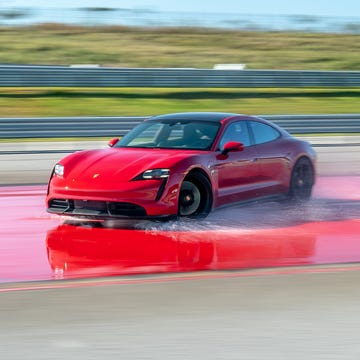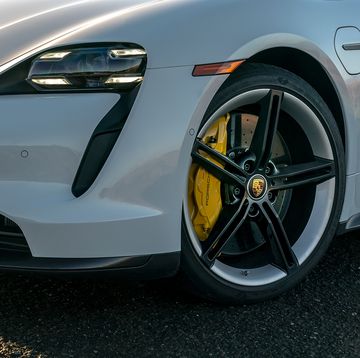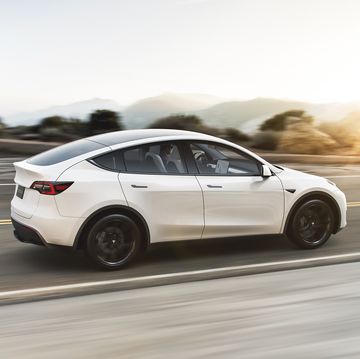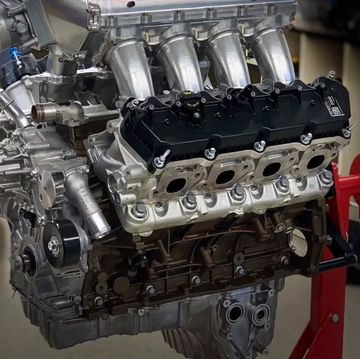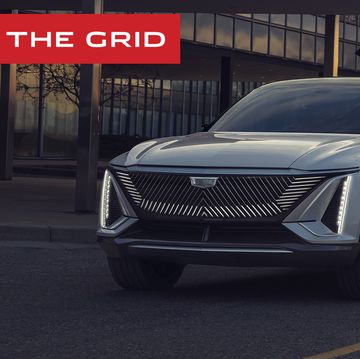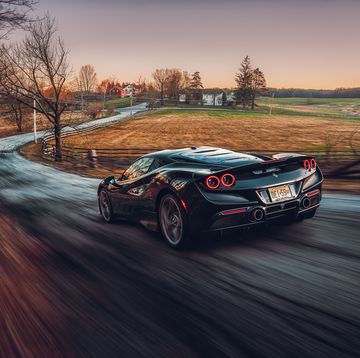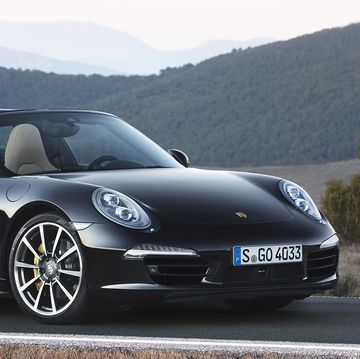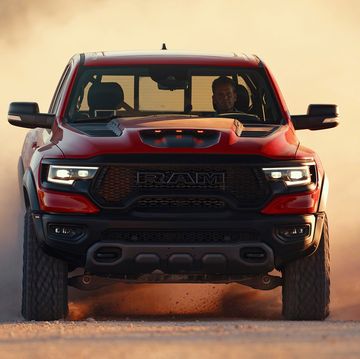Cheaper to develop and easier to package, it once seemed the V6 would make inline-sixes obsolete. Mercedes seemingly abandoned straight-sixes in 1998 when it launched the first V6 in its history. But now, that's changing. Mercedes is returning to the time-honored inline-six layout, with a brand new family of engines packed with all kinds of clever technology
This new gas-powered inline-six shown above, dubbed the M256, is part of a new modular engine family that includes gas- and diesel-powered inline-four and six-cylinders.
Mercedes says the twin-turbo M256 makes enough horsepower to serve as a V8 replacement–generating over 408 hp and 369 lb-ft of torque from 3.0 liters . Those horsepower and torque figures best those of the twin-turbo V6-powered AMG E43.
The M256's two turbochargers aren't twins. One of them is an "electric auxiliary compressor" (eZV, a German acronym), which can spool up to 70,000 RPM in just 300 milliseconds.This helps negate the lag of the larger, exhaust-driven turbo. Mercedes is so confident in this twin-turbo setup, it claims that the engine has no turbo lag whatsoever. We look forward to finding out for ourselves.
Further bringing this straight-six into the future, is the M256's 48-volt electric system. TBased around a crank-mounted electric generator, the system can provide an 18-horsepower boost, regenerate energy from braking, and power the water pump and A/C compressor. Mercedes was even able to eliminate the starter motor and belt-driven alternator, replacing them with a single starter/alternator unit to save weight and eliminate complexity.
Why apply all this technology to an inline-six layout when V6s have become an industry norm? To explain, we need to get nerdy.
Mercedes-Benz made the switch to V6s primarily because they were more affordable to develop and easier to package than inline-sixes. By cutting two cylinders off an existing V8, Mercedes could use the same facilities and many shared parts to build both engines, and mount them using the same hardware.
But that decision created an inherently flawed design. As we've previously explained, a V8 with a 90-degree cylinder angle is inherently smooth—vibrations caused by a cylinder firing in the left bank are canceled out by a simultaneous firing in the right bank. Chop off two cylinders, and you get a 90-degree V6 with uneven firing. This contributes to rough operation, and requires all sorts of engineering work for smooth running.
A straight-six, by contrast, doesn't require any complex hardware for smooth operation, since all the cylinders are in a line. With this layout, there's no side-to-side vibrations, and at any given moment, half of the pistons are traveling up and half are traveling down, canceling out any up-down vibrations.
But the auto industry is changing. With a trend towards downsizing, modular engine families consisting of three-, four- and six-cylinder engines have suddenly become significantly more cost effective. And as turbocharging becomes more effective and efficient, six-cylinders are gradually replacing V8s.
That's why numerous automakers are using modular engine designs built around 0.5-liter cylinders to create entire new engine families. Porsche is doing it with its flat-fours and sixes in the 718 and 911; Jaguar will soon do something similar with its Ingenium motors.
Mercedes hasn't confirmed yet, but we're pretty confident we'll see this engine in the U.S. next year when the facelifted S-Class arrives. The automaker did tell our colleagues at Car and Driver that this straight-six would "replace almost all applications of the existing gasoline V6." We believe the engines will appear on our market soon.
The M256 is a modern take on a tried-and-true engine design. We can't wait to try it out.
A car enthusiast since childhood, Chris Perkins is Road & Track's engineering nerd and Porsche apologist. He joined the staff in 2016 and no one has figured out a way to fire him since. He street-parks a Porsche Boxster in Brooklyn, New York, much to the horror of everyone who sees the car, not least the author himself. He also insists he's not a convertible person, despite owning three.


